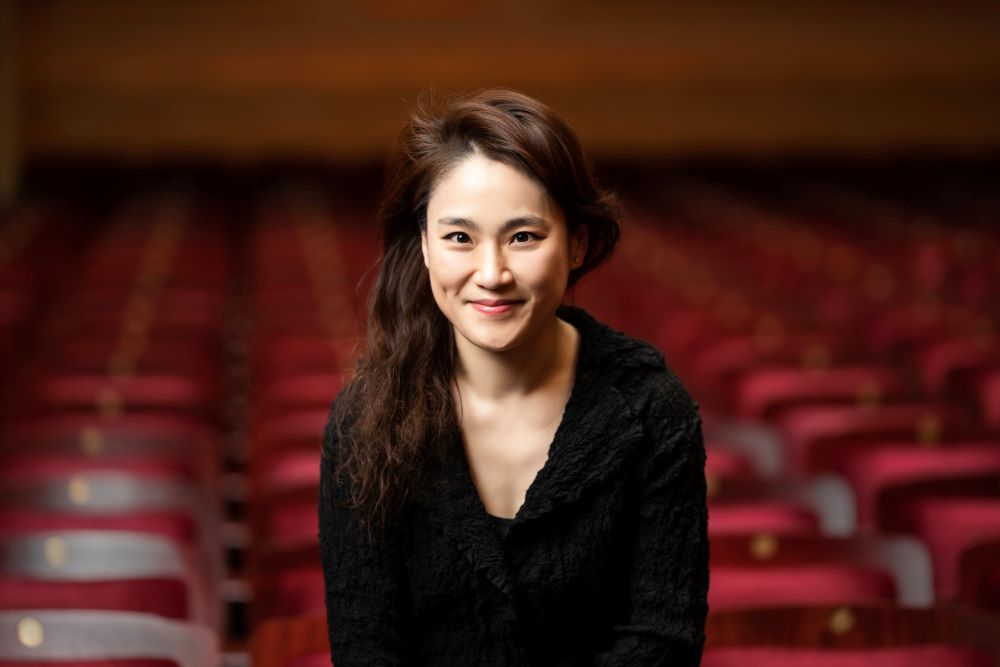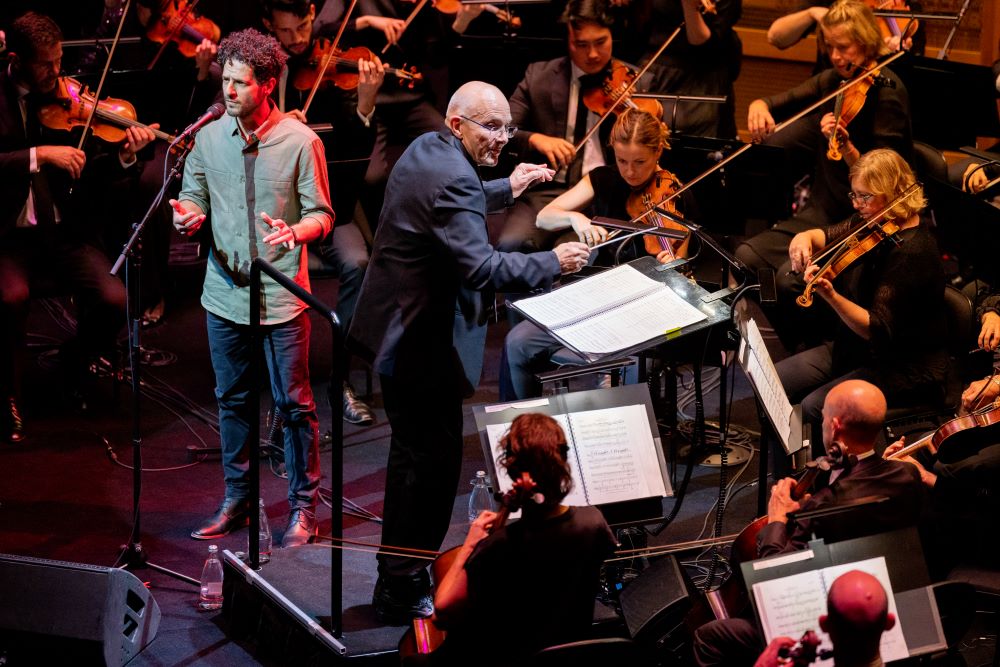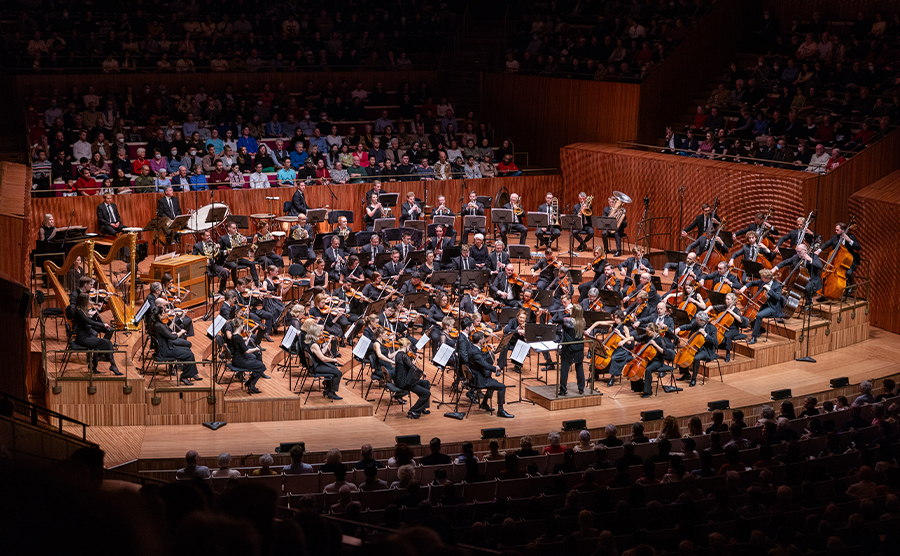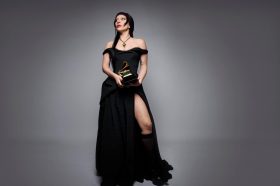Pyotr Ilyich Tchaikovsky’s Fifth Symphony is one of the Russian composer’s greatest works and a romantic mainstay of the orchestral canon.
Given that Tchaikovsky himself was plagued by self-doubt while composing the piece, with such concerns lingering well after its premieres in St Peterburg and Prague (‘I am convinced that this symphony is not a success,’ he wrote in one letter in late 1888) the reverence and respect in which his Fifth Symphony is held today makes the lush power of the work all the sweeter.
Guided by guest conductor Han-Na Chang, who swapped her cello for a baton in the mid-2000s after an already-stellar career, the Sydney Symphony Orchestra (SSO) will perform Tchaikovsky’s Fifth Symphony over four concerts at the Sydney Opera House in May as part of an all-Russian program.
Mikhail Glinka’s overture to Ruslan and Ludmilla and Prokofiev’s Second Piano Concerto are also programmed in the four concerts, with Uzbek pianist Behzod Abduraimov featured as the soloist for the Fifth Symphony.
‘This music is explosive, this Fifth Symphony. It’s a symphony of paradox. And it shows what a complex life that [Tchaikovsky] was living inside. It’s music of anguish, and excitement, and hope, and despair, and more despair … and trying to get out of despair and trying more and more… And how wonderful for us that he was able to channel all of that into music and share that with us,’ Han-Na Chang says.

In many ways the Fifth Symphony embodies much of the turmoil of Tchaikovsky’s life: his conflicted sexuality, his struggles with depression and the constant pull he felt between his Western musical training and his innate sense of Russianness.
‘It’s extraordinary that somebody who was so elegant and such a gentleman was always in turmoil inside. He was perfectly brought up as a gentleman speaking French, but was writing music of such drama. He is this poet of yearning and longing and con desiderio and passione – with desire and passion,’ says Chang.
One man’s passion has inspired another powerful work in the Sydney Symphony’s upcoming May-June program, Ngapa William Cooper, which was composed by Nigel Westlake and explores the life of Yorta Yorta man and Aboriginal activist, William Cooper.
In 1938, less than a month after Kristallnacht, when German Jews were the targets of looting, rioting and violence, Cooper led a delegation of First Peoples to central Melbourne in order to deliver a petition – signed by Aboriginal Elders in support of the Jewish people – to the German Consulate.
As Westlake explains, ‘The fact that [Cooper] was a man who had been denied his rights – the rights of his people, the right to speak Language, the rights to participate in any cultural practice whatsoever, the right to remain on the Traditional lands – [but] had the empathy to relate to a culture on the other side of the world, people he’d never met, and be outraged by their predicament, struck us as an extraordinary act of compassion within itself.’
Westlake collaborated with singer/songwriter Lior and language activist Dr Lou Bennett (a blood relative of Cooper) in the creation of Ngapa William Cooper, and will conduct the Orchestra’s performance of the piece at Sydney’s City Recital Hall in May.
Central to the work is the combination of Lior’s English language vocals and words sung in Language by Bennett, a former member of Tiddas and The Black Arm Band.
‘It’s a beautiful balance between the two voices… So for me to conduct the work and listen to it is a very rich experience,’ Westlake says.

The fusion of older traditions and more contemporary music embodied in Ngapa William Cooper is reflected elsewhere in the Sydney Symphony’s upcoming programming. First performed in San Francisco in 2012, John Adams’ Absolute Jest is a potent example of the influence great music has on subsequent generations of artists, though in this instance it’s the music of Beethoven that plays a central role.
Like a geneticist splicing Beethoven’s musical DNA with his own, Adams has woven together isolated fragments of the German’s oeuvre in composing Absolute Jest – to compelling effect according to the Australian String Quartet’s (ASQ) cellist, Michael Dahlenburg.
‘It’s not a re-composition or anything of that kind. It is a sort of inspiration. It’s a mood board, as it were, for a work. And it’s a very powerful mood board because it means that all the cellular activity is energised and really dramatic and very powerful,’ Dahlenburg explains.
Playing with the Sydney Symphony in June, the ASQ will perform Absolute Jest alongside compositions by Ravel and Brahms (the latter orchestrated by legendary Viennese composer Arnold Schoenberg). The concert also features German conductor Anja Bihlmaier not only making her Australian debut, but conducting Absolute Jest for the first time.
Describing the impact of the piece, Bihlmaier says: ‘It’s exciting in a way, and freaky, but in another way you’re getting really transformed [into] another world or in another time-space. It’s really crazy to listen to that and very fascinating.’
Other Sydney Symphony highlights in the coming months include A Musical Tempest with John Bell, which blends compositions inspired by Shakespeare’s 17th century masterpiece interspersed with extracts from the play performed by veteran Australian actor John Bell; and also When George Met Arnold, a celebration of the music of Schoenberg and US composer George Gershwin, featuring a newly created film combined with a live performance by the Orchestra with pianist Simon Tedeschi.
Both Ngapa William Cooper and Absolute Jest demonstrate the magic that happens when artists and inspiration meet – though, as ASQ violinist Dale Barltrop notes, fusions such as Absolute Jest can also be a challenge, especially for musicians who know their foundational musical references well.
‘[Adams] quotes quite extensively from the scherzo of Beethoven’s very final quartet, Op.135, and the first violin part is quite acrobatic, but [he] takes it in a slightly different direction – and I catch myself out almost every time when I’m playing it, because I always want to return to Beethoven,’ Barltrop says.
The inspiration John Adams drew from Beethoven’s suffering also recalls the turmoil that Tchaikovsky channelled into his Fifth Symphony.
As Han-Na Chang says of the great Russian composer: ‘What a legacy. What a man. What an artist. What a real human being.’
Learn more about Sydney Symphony Orchestra’s must-see events in May and June 2024.




